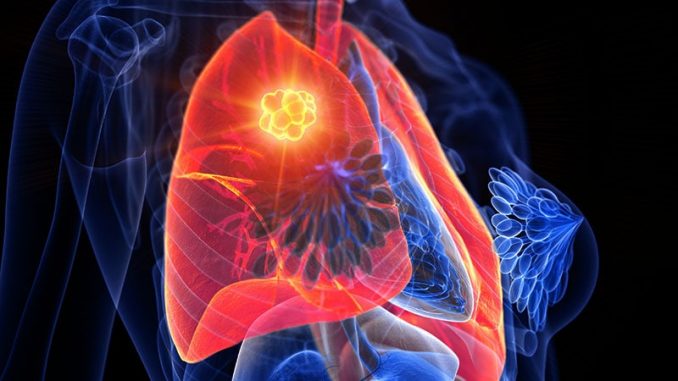
SINGAPORE — Proposed updates to the tumor-node-metastasis (TNM) classification for lung cancer will affect the way patients are staged, experts say.
The updates for the 9th Edition of the TNM Classification of Malignant Tumors: Lung Cancer was presented at the IASLC 2023 World Conference on Lung Cancer this week. The final version will be published January 1.
The core proposed change, according to Hisao Asamura, MD, chair of the IASLC Staging and Prognostic Factors Committee, is to divide N2 and M1c disease into two subcategories, while leaving the T descriptors unchanged.
This update is based on large survival differences among patients with these tumor characteristics, following an analysis of outcomes in more than 87,000 individuals diagnosed with lung cancer.
Session co-chair Ramón Rami-Porta, MD, PhD, explained that previous editions of the classification were based on “pathologic stage, not clinical stage” but ultimately “we could not validate those findings” clinically.
“This is the first time that some sort of very simple quantification” of lung tumors “could be validated at the clinical stage as well,” which means that clinical staging can improve all over the world, said Rami-Porta, medical oncologist at Hospital Universitari Mútua Terrassa, Spain.
Session co-chair Paul Van Schil, MD, PhD, of Antwerp Unversity Hospital, the Netherlands, explained that the proposed changes reflect what clinicians already see in their daily practice.
The latest TNM classification included data submitted on 124,581 patients diagnosed with lung cancer between 2011 and 2019, 56% of whom were from Asia/Australia, 25% from Europe, and 16% from North America.
Overall, 87,339 patients were included in the analysis — 83% with non-small cell lung cancer (NSCLC) and 7% with small cell lung cancer (SCLC). Most (62%) underwent surgery, either alone (47%), alongside chemotherapy (13%), or radiotherapy plus surgery (2%). A minority (13%) received chemotherapy alone, and 13% received all three modalities.
The committee working on the update to the TNM classification had 112 members and comprised 14 subcommittees, which focused on different aspects of diagnosing and assessing the disease.
The committee agreed there should be no changes to the T category in the upcoming 9th Edition.
Evaluating the T category, some members expressed concern that patients with T3 disease embedded in the chest wall have worse survival outcomes than those with other forms of T3 disease. But, Asamura explained, the pathological vs clinical findings were inconsistent.
On pathological assessment, patients with T3 disease in the chest wall had a worse prognosis but clinical assessment indicated no survival difference. Given the lack of consensus, “we do not recommend any changes” to the current criteria, said Asamura.
Turning to the N category, Asamura explained that N2 disease will be divided into two subcategories: N2a, categorized by single N2 station involvement, and N2b, defined as multiple N2 station involvement.
Further analysis indicated that the estimated 5-year survival was significantly worse for patients with N2b disease on clinical assessment (31% vs 42% with N2a disease; hazard ratio [HR] for death, 1.27; P < .0001) and on pathological assessment (HR, 1.46; P < .0001).
The committee also proposed a change to the M category, dividing M1c disease into two subcategories:
-
M1c1 – defined as multiple extrathoracic metastases in a single organ system
-
M1c2 – defined as multiple extrathoracic metastases in multiple organ systems
This change was driven by estimates of 5-year survival among patients with M1c1 (27%) vs M1c2 disease (19%). Compared with M1b disease, M1c1 was associated with a lower risk for death than M1c2 disease (HR, 1.27 vs 1.39).
These changes, particularly those for the N category, will have a notable impact on how patients are staged, Asamura said.
Dividing the N2 category into N2a and N2b disease will push patients with T1, N1 disease from the IIB category (8th edition) to the IIA category (9th edition). The 8th edition categorized all T1, N2 patients as IIIA but the new edition would categorize patients with T1, N2a disease as IIB overall and those with N2b disease as IIIA. And patients with T2, N2a disease will be staged as IIIA — the same category as T2, N2 disease in the 8th edition — while those with N2b disease will be staged as IIIB.
By contrast, the division of M1c into M1c1 and M1c2 disease will not affect a patient’s overall stage, which will be IVB in all cases.
Upal Basu Roy, PhD, MPH, who was not part of the committee, said the TNM classification stage of cancers is “incredibly important in cataloguing the extent of disease” and to “decide the optimal treatment option.”
TNM classification is also “used to describe the burden of disease to be eligible for a clinical trial,” said Roy, executive director of research, LUNGevity Foundation, Chicago.
The changes in N staging may require sampling more lymph nodes than the current sampling frame of six, Roy said, adding that “surgeons and pathologists may need to be educated about the need for additional sampling.”
The subcategories for M1c disease will also need to be aligned with definitions of oligometastatic disease. “This is critical,” Roy said, as this staging may affect treatment choices.
No funding declared. Asamura declares relationships with Medtronic, Taiho Pharmaceutical, Johnson and Johnson, Lily, Astellas, and Ono P harmaceutical. Roy declared no relevant financial relationships .
IASLC 2023 World Conference on Lung Cancer: Abstract PL04.03. Presented September 11, 2023.
J Clin Oncol. Published online September 11, 2023. Full text
For more from Medscape Oncology, join us on X (formerly Twitter) and Facebook
Source: Read Full Article